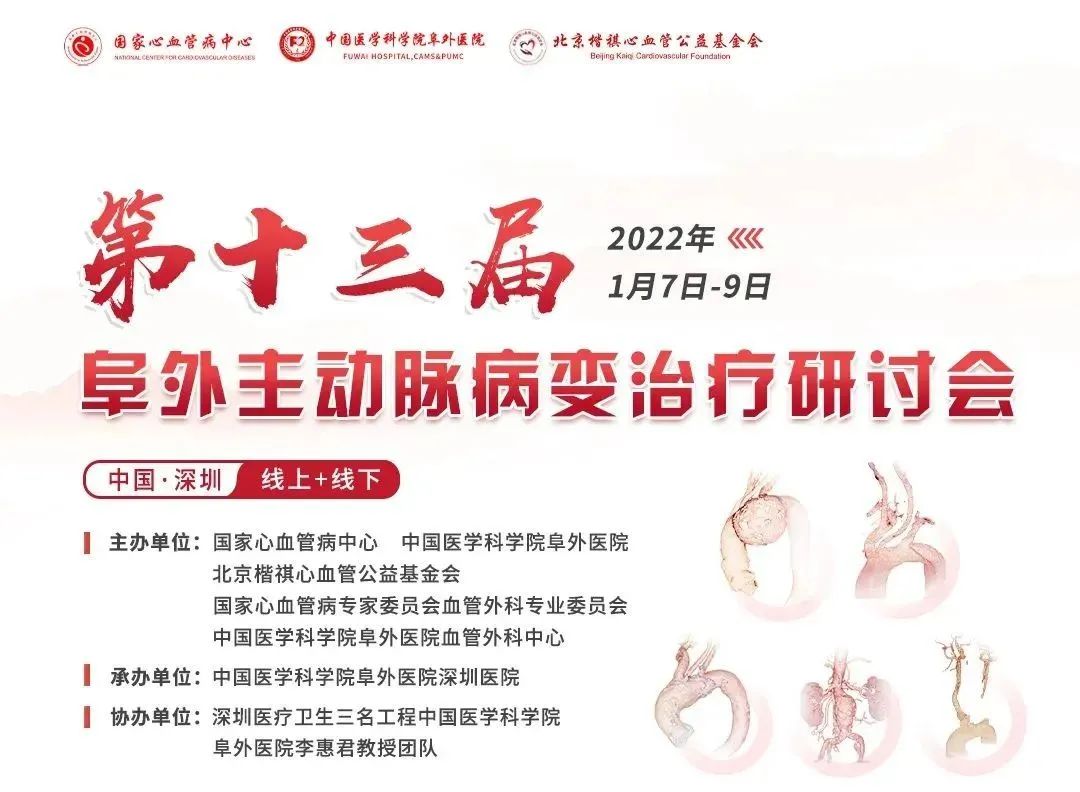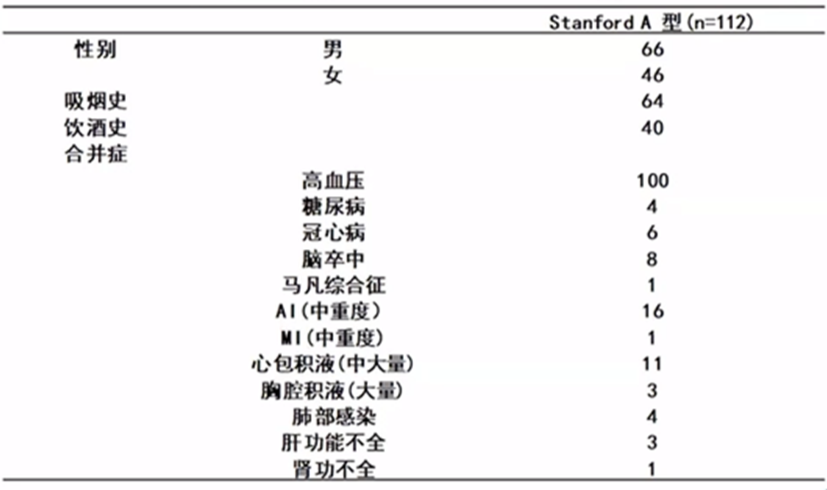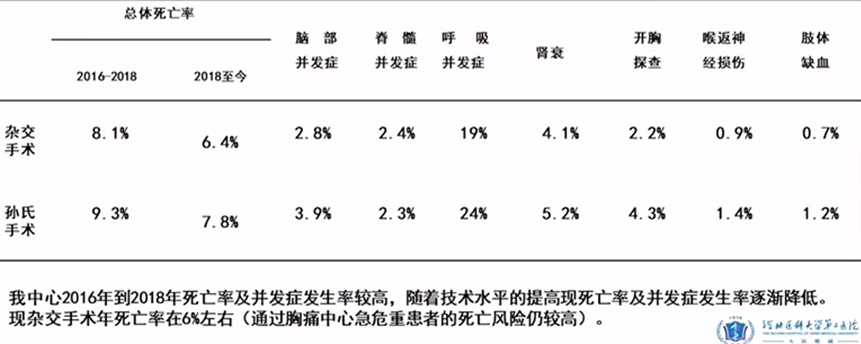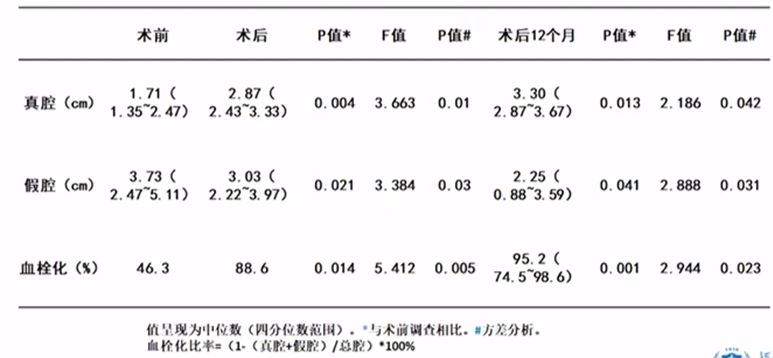
Currently, surgical approaches to aortic disease, include: conventional surgery, endoluminal repair (overlay stenting), and hybridization. Among them, hybridization surgery combines the advantages of both surgical and endoluminal techniques, and its clinical application has gradually increased in recent years. During the 13th Fuwai Symposium on Treatment of Aortic Pathology, Prof. Chen Ziying from the Department of Cardiac Macrovascular Surgery, The Second Hospital of Hebei Medical University, shared their center's accumulated experience in hybridization surgery for type A aortic coarctation.
Backgrounds
Conventional surgical procedures, referred to as ascending aortic total arch replacement + elephant trunk stent implantation (Sun's procedure) have been rapidly promoted and popularized in China, achieving world-renowned results. After the development of conventional surgery in recent years, the time of deep hypothermia stopping circulation has been greatly shortened. Endoluminal repair (laminar stent) does not require chest opening, short operation time, and less trauma. Moreover, the mortality rate and the incidence of neurothoracic pain complications have decreased significantly. However, there are some limitations: when the disease involves the ascending aorta, endoluminal isolation surgery is currently not possible, but some scholars are trying.
However, elderly, high-risk patients with complex comorbidities have a high perioperative mortality and complication rate using conventional surgical procedures. Aortic lesions involving partial branches of the arch are not amenable to conventional endoluminal isolation due to insufficient effective anchorage zones. Due to the lack of evidence, total endoluminal arch reconstruction is not suitable for full-scale application in the treatment of arch lesions.Hybrid technique (or hybrid technique, composite surgery) is a surgical technique to obtain a safe anchorage zone on the one hand, and to significantly reduce surgical trauma or shorten surgical time with the help of endoluminal repair techniques on the other hand.
Chinese Expert Consensus on Hybridization Techniques for the Treatment of Aortic Lesions Involving the Arch.
In 2020, the Vascular Surgery Specialized Committee of the National Committee of Experts on Cardiovascular Diseases published the Chinese Expert Consensus on Hybridization Techniques for the Treatment of Aortic Lesions Involving the Arch. More than 30 experts from more than 20 organizations across the country participated (2 from Taiwan), and it was discussed in four meetings in 2019 and revised and completed in one year.
Hybrid type II total aortic arch repair
Stanford type A aortic coarctation involving the arch, combined with dilated arch tumors or coarctation in the ascending main; rupture in the arch or descending main, but with retrograde tearing of the coarctation to the point where it causes a severe intermural hematoma in the ascending aorta, etc.
Indications: Ascending aortic and arch lesions requiring surgical management and no significant dilatation of the descending aorta are preferred over the age of 60 years for Hybird II, and are also considered in younger patients with more comorbidities, poor general condition, and higher risk of deep hypothermia arrest (patients over 50 years of age also benefited from Hybird II hybridization in a retrospective study at Fu Wai Hospital). Advantages: It can repair the ascending aortic lesion while providing an adequate artificial vascular anchorage zone for distal aortic overlay stent implantation without the risk of reverse tear.
Case report
From 2016 to present, 112 patients underwent Hybrid II surgery in our hospital, 66 males and 46 females. The details of the patients are shown in Table 1.

Table 1. basic profile of patients who underwent Hybrid II surgery from January 2016 to date
From 2016 to date, for patients with type A aortic coarctation, 112 underwent hybridization and 77 underwent Sun's procedure. As can be seen in Table 2, the hybridization surgery patients were older overall. Moreover, the hybridization procedure had a significant advantage in terms of extracorporeal circulation time, aortic block time and total operative time, blood transfusion volume, and time spent in the care unit.

Table 2. overall type A aortic coarctation surgeries, January 2016-present
As can be seen in Table 3, hybridization has a significant advantage in terms of postoperative complications, including: brain complications, respiratory complications, renal failure, laryngeal reentrant nerve injury, and limb ischemia.

Table 3. Complications in patients who underwent Hybrid type II surgery from January 2016 to date
Follow-up
Aortic CTA was reviewed at 1, 3, 6, 9, and 12 months postoperatively and annually thereafter.With the popularity of chest pain centers in the region, in addition, because of the impact of the epidemic, more patients who underwent surgery in our center were reviewed in local hospitals, and there are complete information on the existing 44 cases in our center in the further pseudo-luminal follow-up work.
Analysis of follow-up results
Follow-up of patients undergoing hybridization surgery showed significant enlargement of the true lumen and reduction of the false lumen at 12 months postoperatively. The hybridization procedure achieved a median of 95% thrombolysis of the false lumen, which was superior to conventional surgery.

表4. 32例杂交手术随访结果分析

Table 5. Analysis of follow-up results of surgical thrombolysis in 44 cases of type A entrapment (12 months)
The artificial vessel was in good shape, the branch vessels had smooth blood flow, and the stent vessel was in normal position without displacement. The proximal breach of the entrapment was well closed without contrast leakage, and the false lumen near the stent was completely thrombosed. Compared with the preoperative CTA, the true lumen was significantly enlarged, the false lumen was narrowed, the proximal end and the false lumen near the stent were completely thrombosed, and the abdominal aortic rupture at the distal end of the entrapment existed, and contrast was visible in the false lumen. The aortic overlay stent was up to 200 mm in length, with good vascular plasticity and relatively satisfactory vascular thrombosis and healing. The results of the study [1] have also been published in the journal Risk Management and Healthcare Policy.
Case Discussion
1. Effects of hybridization surgery
The results of hybridization surgery for the treatment of type A aortic coarctation in elderly and high-risk patients as well as patients who cannot tolerate deep hypothermia to stop circulation are positive. Combined with the clinical data from our center, hybridization surgery has its advantages in terms of time, bleeding and complications.
2. Technical aspects of surgery
The team that performs Hybrid surgery needs to be technically proficient across the board. Proficiency in major vascular surgical techniques; proficiency in aortic endoluminal interventions; ability to handle emergencies, precise stent release, and awareness of radiation safety precautions.
3. Anesthesia and extracorporeal circulation level
Routine extracorporeal circulation and avoidance of deep hypothermia arrest. Reduces the difficulty for the anesthesiologist and the extracorporeal circulation; reduces the destruction of the blood system and lessens the systemic inflammatory response; and avoids deep hypothermic arrest of the circulation and reduces the incidence of neurological complications. However, mastering deep hypothermic arrested circulation is still fundamental.
4. One-stop hybridization surgery
The aortic coated stent has a particular length advantage over the elephant trunk stent, with better vessel plasticity. The better adherence of aortic coated stents contributes to pseudolumen thrombosis and vessel healing. With the development of material science, the longevity of coated stents can be further improved, and coated stents have great potential.
Summary
The 2020 Expert Consensus would be a boost to standardize the treatment of aortic type A coarctation.Hybird type II hybridization is advantageous for elderly, high-risk patients who cannot tolerate deep hypothermic shutdown of the circulation, and it is beneficial even for younger, high-risk patients. Routine extracorporeal circulation relatively lowers the threshold for anesthesia and extracorporeal circulation, facilitating the spread of hybrid procedures.
However, the Hybird II surgery has not reduced the requirements for surgical skills. For surgeons need surgeons to master both interventional and surgical techniques, which also puts new demands on surgeons to establish a composite team of surgeons. In conclusion, combining the situation of our center, individualized and precise treatment, and finally achieve the principle of maximum benefit for patients.
Bibliography
[1] Gu J, Chen Z. Clinical Efficacy of Hybrid Surgery for Stanford Type A Aortic Dissection. Risk Manag Healthc Policy. 2021;14:3013-3023. Published 2021 Jul 14. doi:10.2147/RMHP.S296165
转载至《门诊》杂志


